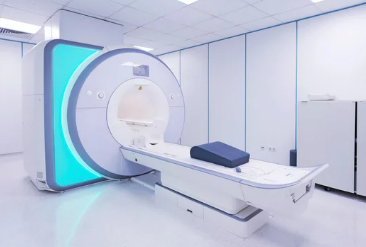Nuclear fusion has long been hailed as the holy grail of clean energy, offering the potential for virtually limitless power with zero carbon emissions. However, taming fusion has been a monumental scientific challenge, requiring innovations in both technology and engineering. Surprisingly, one of the biggest breakthroughs in advancing fusion energy could come from an unlikely source: Magnetic Resonance Imaging (MRI) technology.
MRI, commonly used in hospitals for diagnostic imaging, relies on precise magnetic fields and radiofrequency (RF) waves to produce detailed scans of the human body. The same principles behind MRI—controlling magnetic fields and detecting subtle electromagnetic signals—are now being adapted to revolutionize fusion energy research.
The Fusion Energy Challenge
Unlike fission, which splits atoms, fusion combines light atomic nuclei, such as hydrogen isotopes, into heavier elements, releasing enormous amounts of energy. This is the same process that powers the sun, and replicating it on Earth would provide a nearly inexhaustible energy source.
The main difficulty lies in creating and maintaining the conditions for fusion:
- Temperatures exceeding 100 million degrees Celsius.
- Magnetic confinement to hold the superheated plasma in place.
- Monitoring plasma stability in real-time to prevent disruptions.
Traditional diagnostics and sensors often fail under such extreme conditions, which is why MRI-inspired techniques are now stepping in.
How MRI Principles Are Being Applied to Fusion
MRI works by aligning hydrogen nuclei in a magnetic field, then using RF pulses to “excite” them, and finally detecting the energy they release when they return to their original alignment. In fusion research, this principle is being adapted in two key ways:
1. Advanced Magnetic Field Control
Fusion devices, like tokamaks and stellarators, rely on magnetic fields to confine plasma. MRI technology is helping engineers design magnets with unprecedented precision:
- Superconducting magnets inspired by MRI machines can generate intense, stable fields.
- New techniques enable real-time adjustments to keep plasma from destabilizing.
2. Non-Invasive Plasma Diagnostics
Just as MRI scans the body without surgery, scientists are developing non-contact diagnostic tools for fusion plasmas:
- RF waves similar to MRI signals allow researchers to map plasma density and temperature in real time.
- This technology helps predict and prevent plasma instabilities, a key obstacle in sustaining fusion reactions.
The Role of Superconductors in Both Fields
MRI machines and fusion reactors both depend on superconducting magnets. However, fusion requires much stronger magnetic fields to contain plasma. Lessons from MRI development are enabling fusion scientists to:
- Use high-temperature superconductors (HTS) for stronger, more efficient magnets.
- Reduce costs of building massive magnet systems for next-generation fusion reactors.
- Improve magnetic confinement stability, bringing fusion closer to being commercially viable.
Key Projects Leading the Way
Several global fusion research projects are borrowing heavily from MRI advancements:
- ITER (France): The world’s largest fusion experiment is using MRI-inspired magnet calibration to optimize plasma stability.
- SPARC (USA): A compact fusion reactor from MIT and Commonwealth Fusion Systems employs HTS magnets first pioneered for advanced MRI machines.
- JET (UK): The Joint European Torus is testing RF diagnostics similar to MRI scans to monitor plasma turbulence.
Benefits of MRI-Driven Fusion Innovation
- Faster Plasma Diagnostics: MRI-inspired techniques make it possible to scan plasma conditions in milliseconds.
- Improved Magnet Efficiency: Lessons from medical imaging help create more compact and powerful superconducting magnets.
- Cost Reduction: Adapting existing MRI tech shortens development timelines for fusion devices.
- Cross-Industry Synergy: Advances in fusion magnet design are feeding back into the medical field, leading to better MRI machines.
Challenges Ahead
While MRI technology is accelerating fusion research, challenges remain:
- Scaling MRI-inspired sensors for extreme plasma environments is complex.
- The cost of high-temperature superconductors is still high, though prices are falling.
- Data from plasma MRI-style scans require advanced AI algorithms to interpret in real time.
Future Outlook: Fusion Energy Closer Than Ever
The marriage of medical imaging principles and energy physics could be a turning point for humanity’s quest for sustainable power. As MRI tech evolves, fusion scientists gain new tools to:
- Improve plasma confinement.
- Achieve continuous, stable fusion reactions.
- Move from experimental reactors to commercial fusion power plants.
If progress continues, this collaboration could lead to a future where clean, limitless fusion energy powers our cities—while MRI technology, originally designed to look inside the human body, becomes instrumental in solving one of humanity’s greatest energy challenges.
Also Read :
